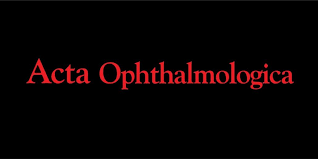Acta Ophthalmologica
2020 Oct 29.
Purpose: Phantom eye syndrome (PES) is an underestimated complication of eye amputation (EA) characterized by phantom eye pain (PEP), phantom visions and/or phantom sensations. The aim of this study was to assess PEP prevalence, features, risk factors, social and psychological consequences and associated quality of life.
Methods: A questionnaire study was conducted in three oculoplastic departments between April 2016 and July 2017. Patients >18 years who had undergone EA ≥3 months earlier were included and asked to complete a prestamped questionnaire. Patient’s characteristics, preoperative, surgical and postoperative data were collected.
Results: Of the 185 questionnaires given, 115 (62%) were returned for analysis. Hundred patients with a mean age of 65.1 years (29-92; SD = 13.0) were included. Eye amputation (EA) indications were uveal melanoma (n = 24, 24%), trauma (n = 20, 20%), retinal detachment (n = 20, 20%), glaucoma (n = 14, 14%) and endophthalmitis (n = 12, 12%). Forty-seven (47%), 30 (30%) and 38 (38%) patients experienced PEP, phantom visions and phantom sensations, respectively. Anxiety and depression [Hospital Anxiety Depression scale (HADS) score ≥8 for both] were diagnosed in 34 (34%) and 42 (42%) patients, respectively. The mean EQ-5D-3L and EQ-5D visual analogue scale scores were 0.8 (0.06-1; SD = 0.2) and 68 (0-100; SD = 22), respectively. Preoperative eye pain (p = 0.031), glaucoma (p = 0.027), postoperative anxiety with HADS score ≥8 (p = 0.012) and ≥11 (p = 0.014), aesthetic discomfort (p = 0.002) and EQ-5D-3L score <0.8 (p < 0.001) were significantly associated with PEP in the univariate analysis. In the multivariate analysis, only anxiety (HADS score ≥8) was significantly associated with PEP (p = 0.009).
Conclusion: Phantom eye pain (PEP) is a common complication of EA strongly associated with postoperative anxiety.
© 2020 Acta Ophthalmologica Scandinavica Foundation. Published by John Wiley & Sons Ltd.
- PMID: 33124153
- DOI: 10.1111/aos.14657

